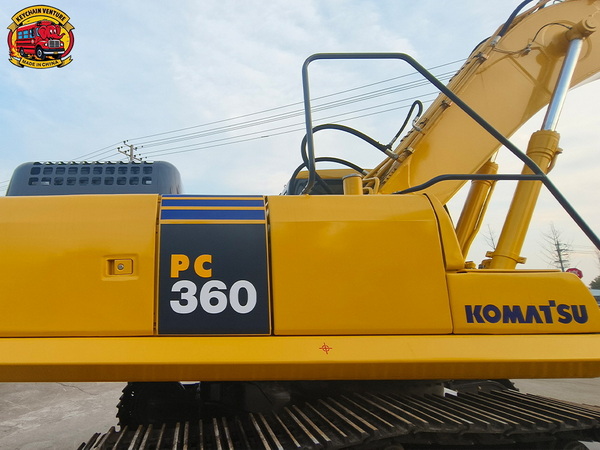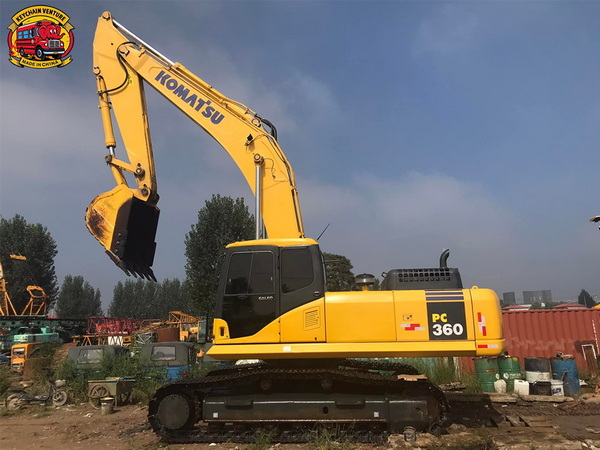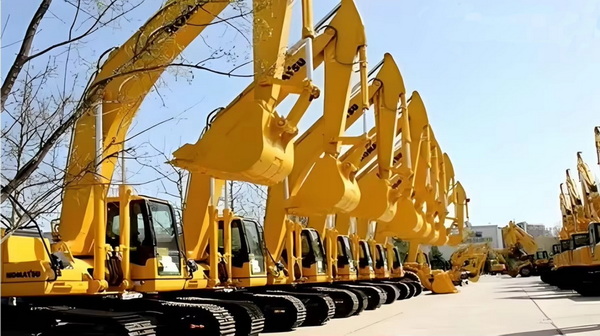







Content Menu
>> Large and Ultra Large Excavators
● Key Uses of a Used Excavator
>> Lifting and Material Handling
>> Demolition
>> Landscaping and Agricultural Applications
>> Utility and Infrastructure Projects
● Benefits of Choosing a Used Excavator
>> Flexibility in Configuration
● How to Choose the Right Used Excavator
>> Conduct a Thorough Inspection
>> Purchase from Reputable Sources
● Maintenance of Used Excavators
>> Daily Fluid and Filter Checks
>> Lubrication of Moving Parts
>> Scheduled Professional Inspections
● Versatility Through Attachments
● FAQ
>> 1. What are the main advantages of buying a used excavator?
>> 2. How can I ensure the quality of a used excavator before purchase?
>> 3. What are common attachments used with excavators?
>> 4. How do used excavators contribute to infrastructure projects?
>> 5. What maintenance is required for used excavators to keep them in good condition?
Excavators are indispensable heavy machinery widely used in construction, mining, agriculture, and infrastructure projects. A used excavator, in particular, provides an economical and versatile solution for many industries by enabling tasks such as digging, lifting, demolition, and material handling with efficiency and precision. This article will explore the various applications, benefits, types, maintenance practices, and buying considerations associated with used excavators, offering a comprehensive guide for professionals and businesses seeking reliable heavy equipment.

Used excavators come in various sizes and configurations, each suited to specific applications and environments. Understanding the differences helps in selecting the right machine for a given project.
Mini excavators, also known as compact or mini diggers, are ideal for confined spaces such as urban construction sites, residential landscaping, and utility trenching. Weighing between 1 to 8 tons, they offer excellent maneuverability and can perform precise digging tasks without causing significant ground disturbance. Their compact size allows them to access areas where larger machines cannot operate, making them a preferred choice for small-scale projects.
Weighing between 13 to 35 tons, medium excavators are the most commonly used type in general construction. They strike a balance between power and mobility, making them suitable for a wide range of tasks including foundation digging, road construction, and material loading. Their increased reach and lifting capacity compared to mini excavators make them versatile assets on mid-sized job sites.
Large excavators, typically over 21 tons, are built for heavy-duty applications such as mining, quarrying, and large-scale earthmoving. Ultra large models, like the Hitachi EX2600-7, are designed for massive excavation projects requiring the removal of vast quantities of earth or rock. These machines feature powerful engines and robust hydraulic systems capable of handling extreme workloads over extended periods.
Unlike traditional tracked models, wheeled excavators operate on rubber tires, making them ideal for use on hard surfaces like asphalt and concrete. They are commonly used in road maintenance and urban infrastructure projects where mobility and speed are essential. However, their performance on soft or uneven terrain is limited compared to tracked versions.
The primary function of any excavator is earthmoving. Used excavators efficiently dig foundations, trenches, and drainage ditches, enabling rapid site preparation. Their hydraulic systems allow for deep and precise excavation, reducing the need for manual labor and accelerating project timelines.
Equipped with lifting capabilities, used excavators can move heavy construction materials such as steel beams, concrete slabs, and prefabricated components. This functionality is crucial during building assembly and infrastructure development, where precision placement is required.
With attachments like hydraulic breakers and shears, used excavators are highly effective in demolition work. They can dismantle concrete structures, break through walls, and crush debris safely and efficiently. Their ability to operate at height and in tight spaces makes them safer and more controlled than manual demolition methods.
In mining operations, used excavators extract minerals, load haul trucks, and clear overburden. Their durability and high torque enable continuous operation in harsh environments, contributing to high productivity and cost efficiency in resource extraction.
Used excavators reshape terrain, dig ponds, and clear vegetation in landscaping projects. In agriculture, they assist in irrigation system installation, land leveling, and stump removal, enhancing land usability and crop yields.
Used excavators play a vital role in laying underground utilities such as water pipes, gas lines, and electrical conduits. Their precision and power make them essential for trenching, backfilling, and road repair, supporting the development and maintenance of urban and rural infrastructure.

Purchasing a used excavator significantly reduces initial investment compared to buying new. This cost advantage allows businesses to allocate resources to other critical areas while still acquiring high-performance machinery.
New excavators lose value rapidly in the first few years. A used excavator has already undergone this depreciation, meaning its resale value remains more stable over time, offering better long-term financial returns.
Used excavators are often ready for immediate deployment, eliminating long lead times associated with new equipment orders. This availability is crucial for time-sensitive projects and emergency repairs.
A well-maintained used excavator comes with a documented operational history, allowing buyers to assess reliability and performance before purchase. This transparency reduces the risk of unexpected mechanical failures.
The used market offers a wide variety of models and attachment compatibility, enabling buyers to select machines tailored to specific project requirements. This flexibility enhances operational efficiency and project adaptability.
Assess the scope, terrain, and specific tasks of the project to determine the appropriate size and type of excavator. Consider factors such as digging depth, lifting capacity, and space constraints.
Evaluate manufacturers based on reputation, reliability, and parts availability. Brands like Hitachi, Caterpillar, and Yanmar are known for durability and strong after-sales support.
Physically inspect the machine for signs of wear, hydraulic leaks, engine condition, and undercarriage integrity. Verify operating hours and review maintenance records to ensure consistent servicing.
Operate the excavator to assess responsiveness, hydraulic performance, and overall functionality. A test run can reveal issues not visible during a static inspection.
Buy from certified dealers or auction platforms with warranties and return policies. Reputable sellers provide transparency and support, reducing the risk of acquiring faulty equipment.
Regularly inspect engine oil, hydraulic fluid, coolant, and fuel levels. Replace air and fuel filters according to the manufacturer's schedule to prevent performance degradation.
The hydraulic system is critical to excavator operation. Check for leaks, monitor oil quality, and replace contaminated fluid promptly. Clean attachment connections to avoid introducing debris into the system.
The undercarriage, including tracks, rollers, and sprockets, is prone to wear. Remove mud and debris after each use and check track tension daily. Proper tension prevents premature wear and de-tracking.
Frequent lubrication of pins, bushings, and joints reduces friction and extends component life. Follow the manufacturer's lubrication schedule and avoid over-lubrication, which can attract dirt and cause environmental issues.
Even with daily checks, periodic inspections by certified technicians are essential. A comprehensive inspection every 500 operating hours can identify hidden issues and prevent costly breakdowns.
Used excavators can be fitted with various attachments to expand their functionality:
- Buckets: For digging and material handling.
- Hydraulic Breakers: For breaking concrete and rock.
- Augers: For drilling holes in soil or rock.
- Grapples: For sorting and handling debris.
- Tiltrotators: For precise bucket positioning and enhanced maneuverability.
These attachments transform a single machine into a multi-functional tool, increasing productivity and reducing the need for additional equipment.
Used excavators offer a cost-effective, reliable, and versatile solution for industries requiring heavy machinery. Available in various sizes—from compact mini excavators to ultra large mining models—they perform critical tasks in construction, demolition, mining, agriculture, and infrastructure development. Their lower acquisition cost, reduced depreciation, and immediate availability make them an attractive investment. Proper selection, thorough inspection, and consistent maintenance ensure long-term performance and value. With the right attachments, a used excavator becomes a highly adaptable asset capable of meeting diverse project demands.

Buying a used excavator offers significant cost savings, slower depreciation, immediate availability, and flexibility in choosing from a wide range of models and brands. Properly maintained used excavators can perform similarly to new ones, providing excellent value for money.
Inspect the machine physically or with a professional, check for wear and damage, review maintenance and service history, verify operating hours and age, and conduct a trial run to assess performance and hydraulic responsiveness.
Common attachments include digging buckets, hydraulic breakers, grapples, shears, and crushers. These enhance the excavator's ability to perform tasks like demolition, material handling, and breaking concrete.
Used excavators are used in laying pipelines, installing cables, repairing roads, and other utility work. Their capability to work in confined spaces and handle heavy loads makes them ideal for infrastructure development and maintenance.
Regular maintenance involves checking and replacing fluids and filters, inspecting hydraulic systems and undercarriage components, lubricating moving parts, and following manufacturer-recommended service intervals to avoid breakdowns and maintain efficiency.
[1](https://www.hitachicm.com/gb/en/about-us/insights/types-of-excavators-and-their-usage/)
[2](https://www.hitachicm.com/gb/en/about-us/insights/five-tips-for-safely-driving-heavy-construction-equipment/how-do-i-maintain-my-excavator-4-maintenance-tips/)
[3](https://www.yanmar.com/eu/construction/blog/06.html)
[4](https://readydig.com/how-to-choose-the-right-excavator-size-for-construction-projects/)
[5](https://www.kjexcavator.com/tips-to-keep-a-used-caterpillar-excavator-in-the-best-working-condition/)
[6](https://www.tatahitachi.co.in/blogs/enhancing-excavator-efficiency-a-comprehensive-guide-to-excavator-attachments/)
[7](https://www.usedtruckexcavator.com/excavator-sizes-and-weights/)
[8](https://www.empire-cat.com/company/news/maintenance-tips-for-excavators)
[9](https://boomsupplanthire.com.au/blog/different-types-of-excavator-attachments-explained/)
[10](https://growthpower.jp/English/excavators)
[11](https://www.usedtruckexcavator.com/excavator-maintenance-schedule/)
[12](https://hawkexcavator.com/specs-brochures/guide-to-excavator-attachments/)
[13](https://www.gregorypoole.com/guide-to-the-different-types-and-sizes-of-excavators/)
[14](https://www.eaglepowerandequipment.com/blog/2020/09/best-excavator-maintenance-tips-to-avoid-costly-downtime/)
[15](https://www.epiroc.com/en-ae/products/excavator-attachments/jcr:content/par)
[16](https://www.usedexcavatorsforsales.com/excavator-types-and-sizes/)
[17](https://catused.cat.com/en/excavator-maintenance-guide-7-excavator-maintenance-tips/98/blogcontent.html)
[18](https://lugongma.com/common-attachment-and-their-functions-for-excavators/)
[19](https://www.usedtruckexcavator.com/used-excavator-machine-a-comprehensive-buying-guide/)
[20](https://www.usedexcavatorsforsales.com/excavator-lifespan/)